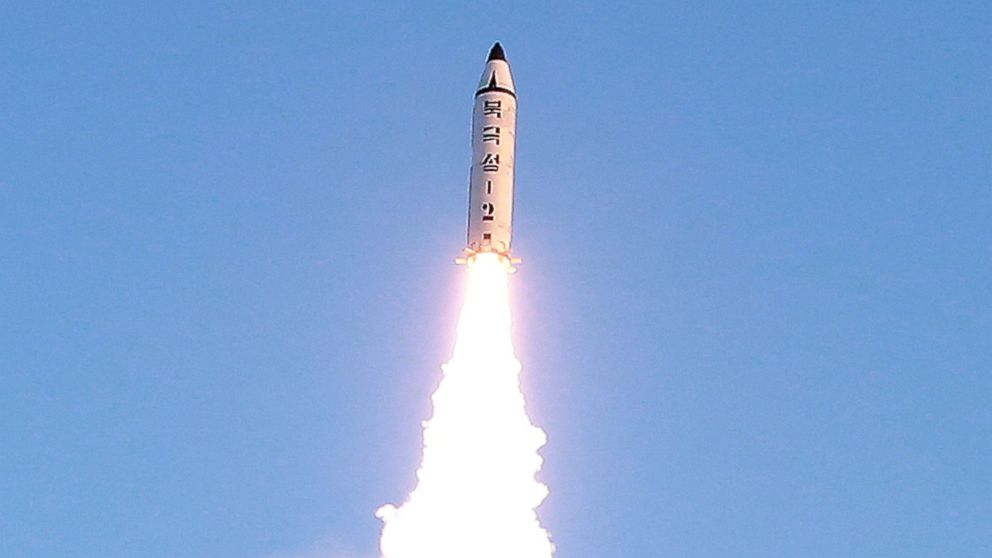A look at North Korea's missile launches and technology
— -- In the wake of North Korea's most recent ballistic missile test the Pentagon is strongly condemning the North Korean program as "a clear grave threat to our national security."
North Korea has continued to test a variety of mid-range and long range ballistic missiles in defiance of United Nations Security Council resolutions barring the development of such technologies.
North Korea's official Korean Central News Agency described the missile launched Sunday as a Pukguksong-2 missile capable of carrying a nuclear weapon. While that claim cannot be proven, the test indicated that North Korea is making progress in using solid booster rockets to launch its newer missiles.
Though the missile was never determined to be a threat to the United States, Davis said the U.S. military has the means of defending itself and its allies from a North Korean missile threat.
Here is a look at North Korea's ballistic missile technologies and the progress they've made in recent years.
What was launched this weekend?
A U.S. official told ABC News that, this weekend, North Korea launched a solid rocket fueled KN-11 missile that is described as an intermediate range missile than can travel 1,400 nautical miles.
It was the first land-based test of a missile designed to be launched from a submarine. It was successfully tested in an underwater launch last year on August 23, though not from a submarine.
According to the official, the KN-11 missile was airborne for 14 minutes on a vertical trajectory and a distance of 310 miles into the Sea of Japan.
The two successful launches indicate North Korea is making progress in developing solid rocket fuel technology, a more stable propellant than the liquid rocket fuel North Korea has used in its other medium and long-range missiles.
The use of solid rocket fuels means North Korea will need less time to prepare making it difficult for American satellites to track potential launches.
Improving Missile Technology
Early this year North Korean leader Kim Jong Un announced that his country was close to testing an intercontinental ballistic missile (ICBM). No such test has occurred yet, but the announcement marks North Korea's growing confidence in its missile programs. North Korea has stated publicly that its goal is to develop a miniaturized nuclear warhead small enough to be placed atop a ballistic missile capable of striking South Korea, Japan or the United States.
North Korea conducted 21 missile tests in 2016, the most significant being launch tests of the mobile launched Musudan mid-range missile and the KN-11 submarine launched missile.
The liquid fueled Mususdan was tested for the first time in 2016, but only one of eight launches was a success with the rest ending as spectacular failures.
The solid rocket fueled KN-11 is a missile designed to be launched from a submarine, but this weekend's test now shows the missile can also be launched from land. The success of the rocket fueled system advances North Korea's capabilities and could make future launches harder to detect.
The KN-08 and KN-14 missiles are larger mobile launched ICBM's potentially capable of reaching the continental United States, but North Korea has yet to test the missiles that have only been seen on parade in Pyongyang.
But North Korea has already demonstrated success in developing long-range rocket technology. Last February, the launch of an Unha 3 successful placed a satellite in orbit. American officials have said the satellite tests are used by North Korea to develop its long range ballistic capabilities.




